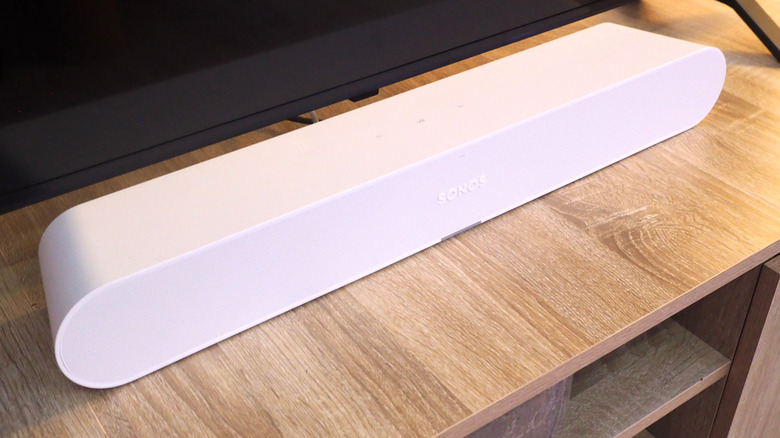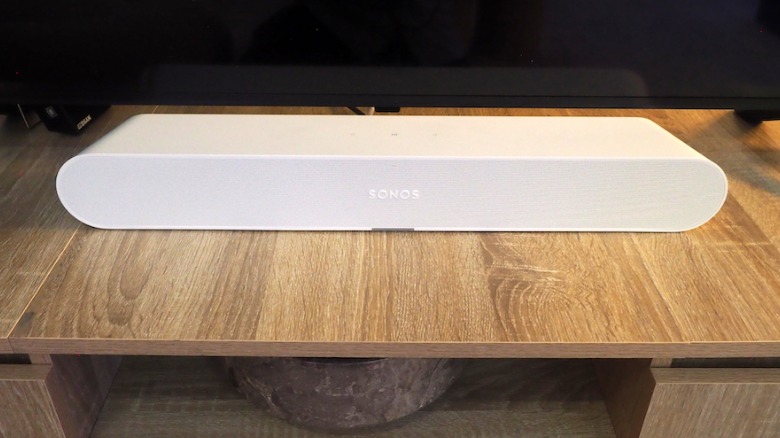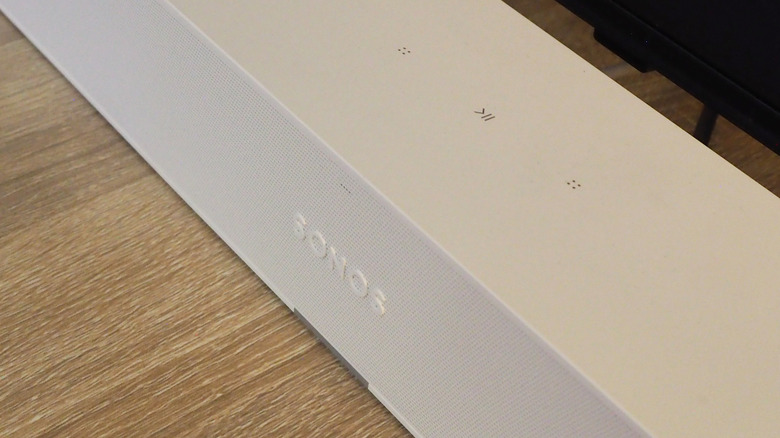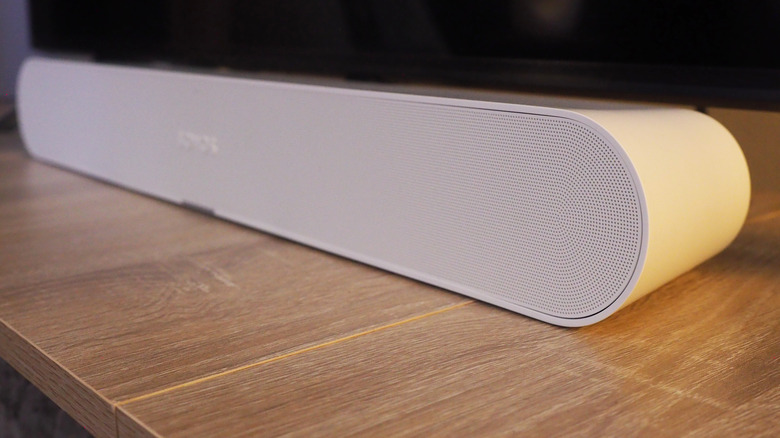Sonos Ray Is A $279 Soundbar For When Your TV Speakers Suck
Sonos is adding a third soundbar to its range, with the Sonos Ray as its most affordable with a $279 price tag. Where the Sonos Arc and Beam focus on mid to high-end setups, Ray's focus is an easy upgrade path for those wanting more than their TV's built-in speakers, though with familiar features like multi-room support along for the ride.
Unsurprisingly, there are some compromises that come along with a sub-$300 price tag. Where Beam (Gen 2) and Arc rely on HDMI-ARC for their connectivity with the TV, Ray uses an optical input instead. There's no Dolby Atmos support, either, just Dolby Digital and DTS Digital 5.1 surround sound.
Sonos' argument is that it makes for a much easier soundbar setup experience, particularly when you consider the first-time-upgrader it has in mind. Being able to just plug in an optical connection is certainly more straightforward than trying to deal with the — oftentimes frustrating — complexities of HDMI-ARC, not to mention that it requires the more recent port. It means you control Ray's volume with the soundbar's IR port and your existing TV remote, too, also simplifying things.
No microphone, no Atmos
The other big absence — for better or worse — is the lack of microphones. That means no native Amazon Alexa or Google Assistant support, or indeed onboard support for the new Sonos Voice Control system. If you have a microphone-enabled Sonos speaker elsewhere, of course, you can use that to control Ray remotely, and there are touch-sensitive buttons on the soundbar itself.
As for Atmos, the relative paucity of actual content — not to mention the fact that it's often priced at a premium — probably leaves that a less frustrating omission, too. The Ray still supports wirelessly pairing up a Sonos SUB and rear surround speakers, though just how many people actually go to the effort there remains to be seen.
Happily, then, Ray sounds decent even when it alone is responsible for the soundtrack. Part of that is down to the new driver design, built around a front-facing acoustic architecture. That means — unlike, say, Beam or Arc — you can tuck Ray in a piece of furniture, in a media cabinet, or on a shelf without having to worry about blocking up-firing drivers in the process. There's also support for wall-mounting.
Sound that punches above its weight
With limited length to play with, it's no surprise that stereo separation suffers a little. Sonos' demos focused on more bombastic content, like the latest Bond movie, where roping in some Sonos One rear speakers definitely improved the immersion. Even on its own, however, Ray punches far higher than you'd expect given the footprint. With four Class-D digital amps driving a pair of tweeters and a pair of midwoofers it's definitely loud enough to upset the neighbors if you don't turn on Night Sound to tamp down some of the extremes.
Where most affordable soundbars can struggle with music playback, though, Ray holds its own there too. That should, arguably, come as no surprise: after all, Sonos' smaller audio-focused models are unexpectedly capable. Vocals sounded crisp and balanced, and the same goes for dialog in movies. In fact, I can't help but think of the long-discontinued Sonos PLAY:3 and feel like you could make a reasonable argument that the Ray could be its spiritual successor. It'll go on sale on June 7, 2022, in the U.S., in black and white.



